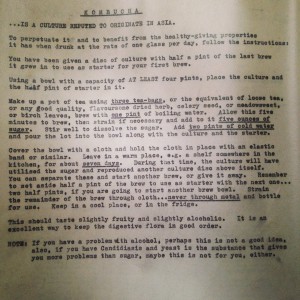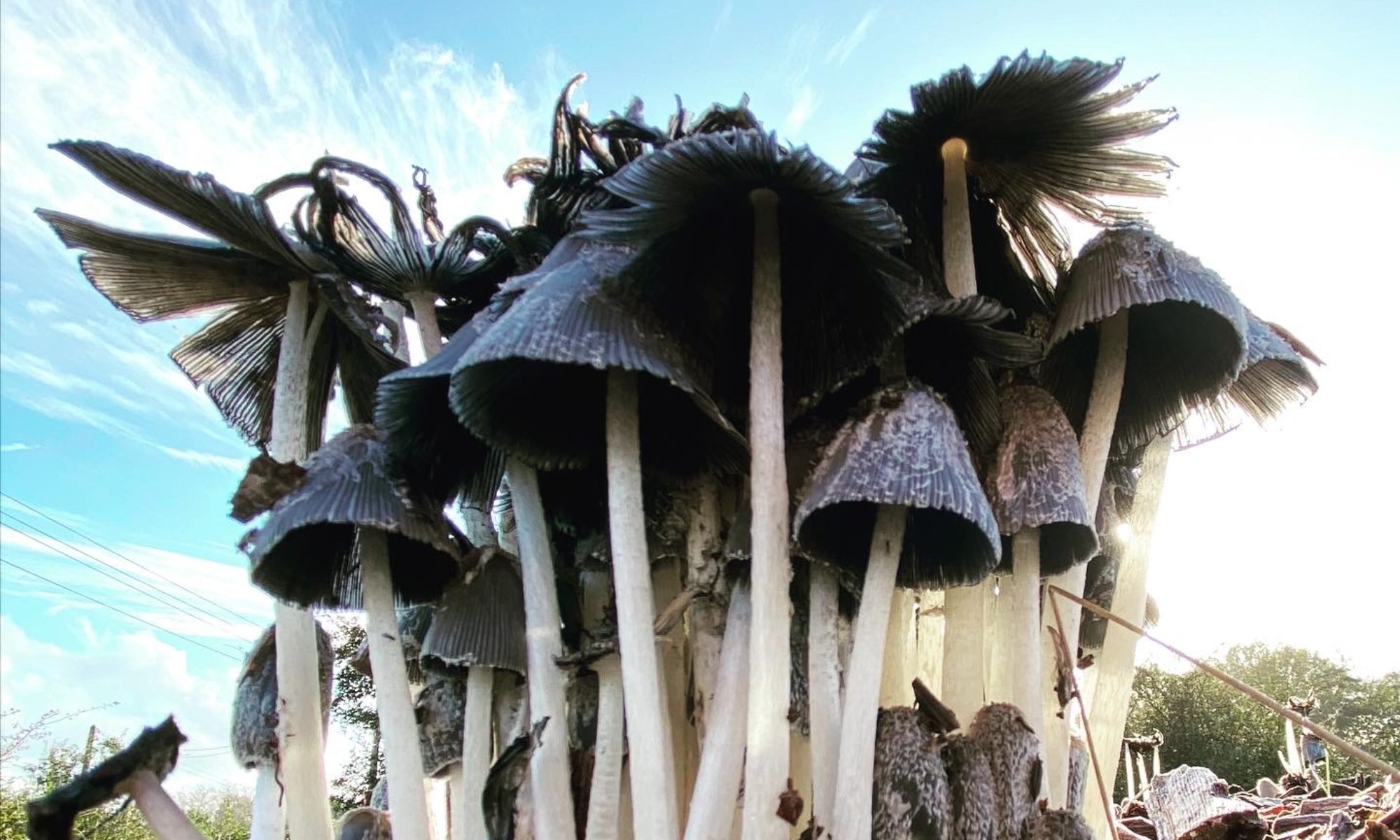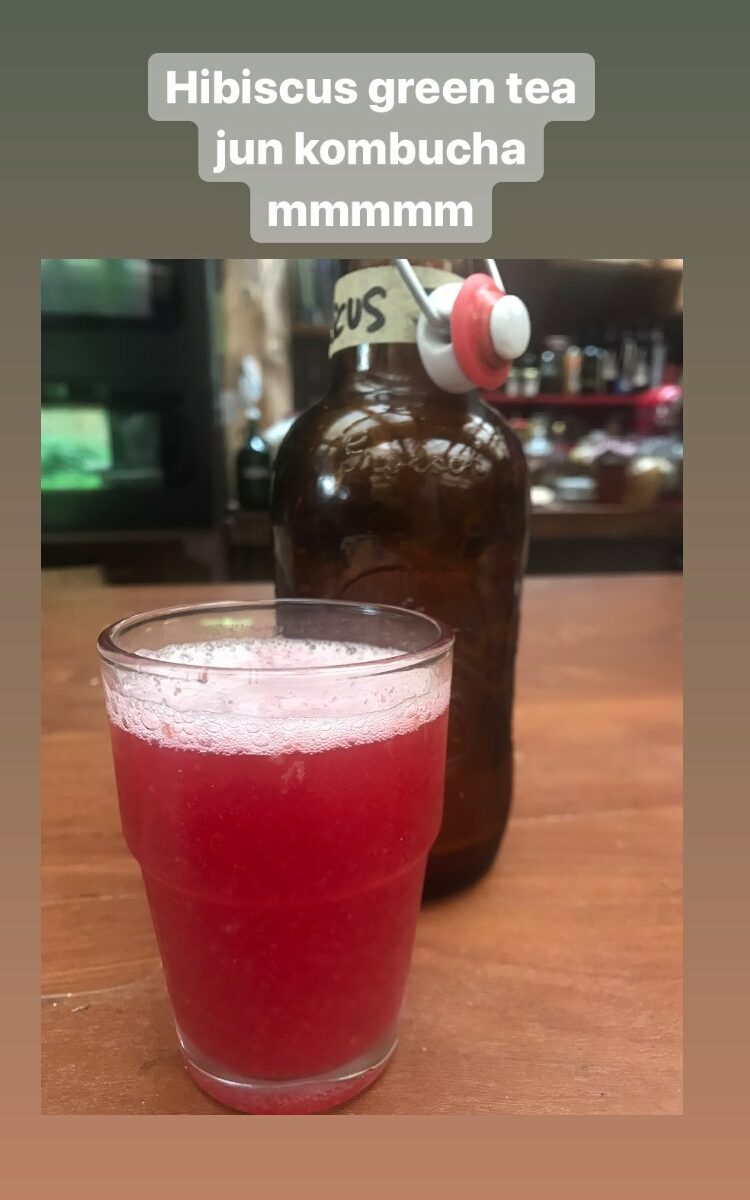Kombucha
Kombucha is one of my favourite drinks. It’s a fermented sweet tea. The first time I saw Kombucha
I swore then and there that it would never pass my lips! That was about 15 years ago and thankfully I gave it a try in recent years. While the culture that ferments tea into Kombucha can look a little daunting, it’s grown on me to become something I look on with extra delight, it’s an ugly fascinating tasty and healthy science experiment!
The Kombucha culture is called a SCOBY which is an acronym for Symbiotic Culture Of Bacteria and Yeast= S.C.O.B.Y.
The basic premise is simple: obtain a scoby- again ask around in your community there’s bound to be someone who also brews Kombucha and can pass a scoby onto you. If not, you’ll have to buy one or make your own. If you’d like to make your own you can buy a bottle of commercial ‘live’ plain kombucha and grow one from that. It’s not complicated, you can google it to see the process. I’ll make another post about this specifically another day.
Feed the scoby a quantity of sweet tea that’s cooled to room temperature. Let it sit/ ferment for between 5-25 days until its at a perfect balance between sweet and tart. Usually I find approximately 5 days is perfect, but this depends on a few factors such as the warmth of the room and the ratio of scoby and starter to tea. After day 3, taste a little bit of the tea each day until its a taste you find a pleasant balance between sweet and sour. The sugar will be digested by the scoby and converted into probiotics and B vitamins and you’ll find the tea is less and less sweet as each day goes by.
My favourite reference book is a free download from the Cultures for Health website. If you sign up to their newsletter you can download their compilation of e-books one of which is about Kombucha. This has the most concise and useful information that I’ve found- even better than some books I’ve bought- and best of all it’s free!
Since I’ve been drinking Kombucha I’ve found a healthy replacement for fizzy sodas that are laden with sugar and chemicals. If Kombucha goes through a secondary fermentation and you add fruity flavours it can turn out far nicer than any commercial and too sweet drink on the market.
I’ll share my exact kombucha recipe with you next and a few other recipes that I’ve come across.
In the meantime this link from Cultures for Health is the recipe I follow. You can read more exact instructions here.
And this is the most important part, that you follow these ratios. With some other ferments I feel you can be a bit loose with measurements- but with kombucha it’s more important to be exact.
| Container Size | Tea | Sugar | Water | Starter Tea or Vinegar |
| One quart | 1½ teaspoon loose tea or 2 tea bags | ¼ cup | 2-3 cups | ½ cup |
| ½ Gallon | 1 tablespoon loose tea or 4 tea bags | ½ cup | 6-7 cups | 1 cup |
| Gallon | 2 tablespoons loose tea or 8 tea bags | 1 cup | 13-14 cups | 2 cups |
Here is a typed instructions from my Herbalism teacher Judith Hoad:



